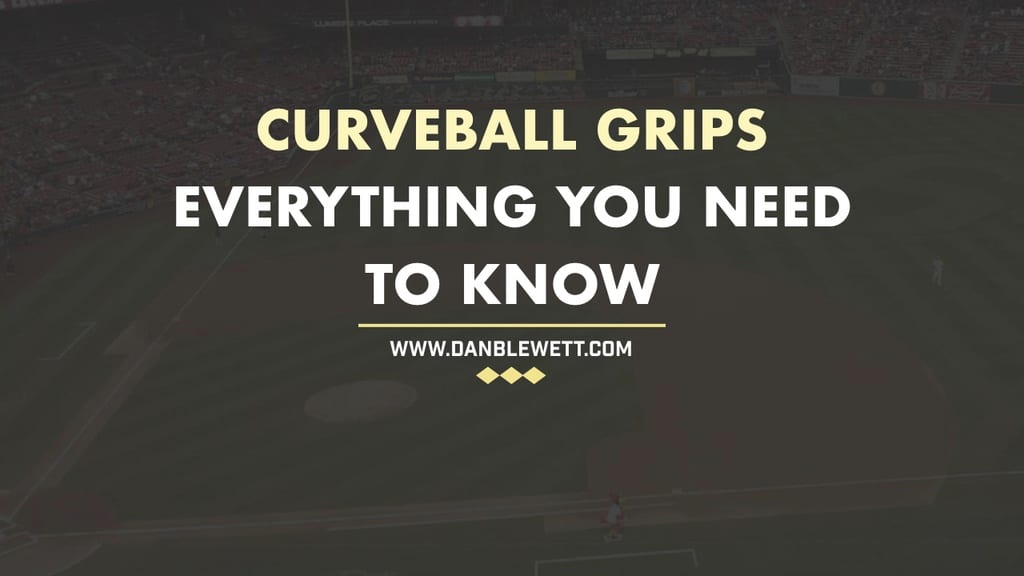*This article may contain product links which pay me a small commission if you make a purchase. Learn more.
Want to know the best curveball grips that are used by nearly every pro pitcher in baseball? They’re all in this article…
Learn The Different Curveball Grips
Yep, the core finger placement is mostly the same, with only minor variations in the placement of the index finger. The truth is, throwing a good curveball is mostly about how you spin the ball.
What’s the best curveball grip? There isn’t one single grip, but you DO need to place the middle finger on the inside of the horseshoe of the seam, to get the fingers in a position to apply topspin to the baseball. THAT is how a curveball grip applies the proper spin. Learn more below.
Producing good spin is a combination of understanding the mechanics of the pitch, along with having pitching mechanics that can deliver your hand to the right spot repeatedly.
Curveball Spin Basics
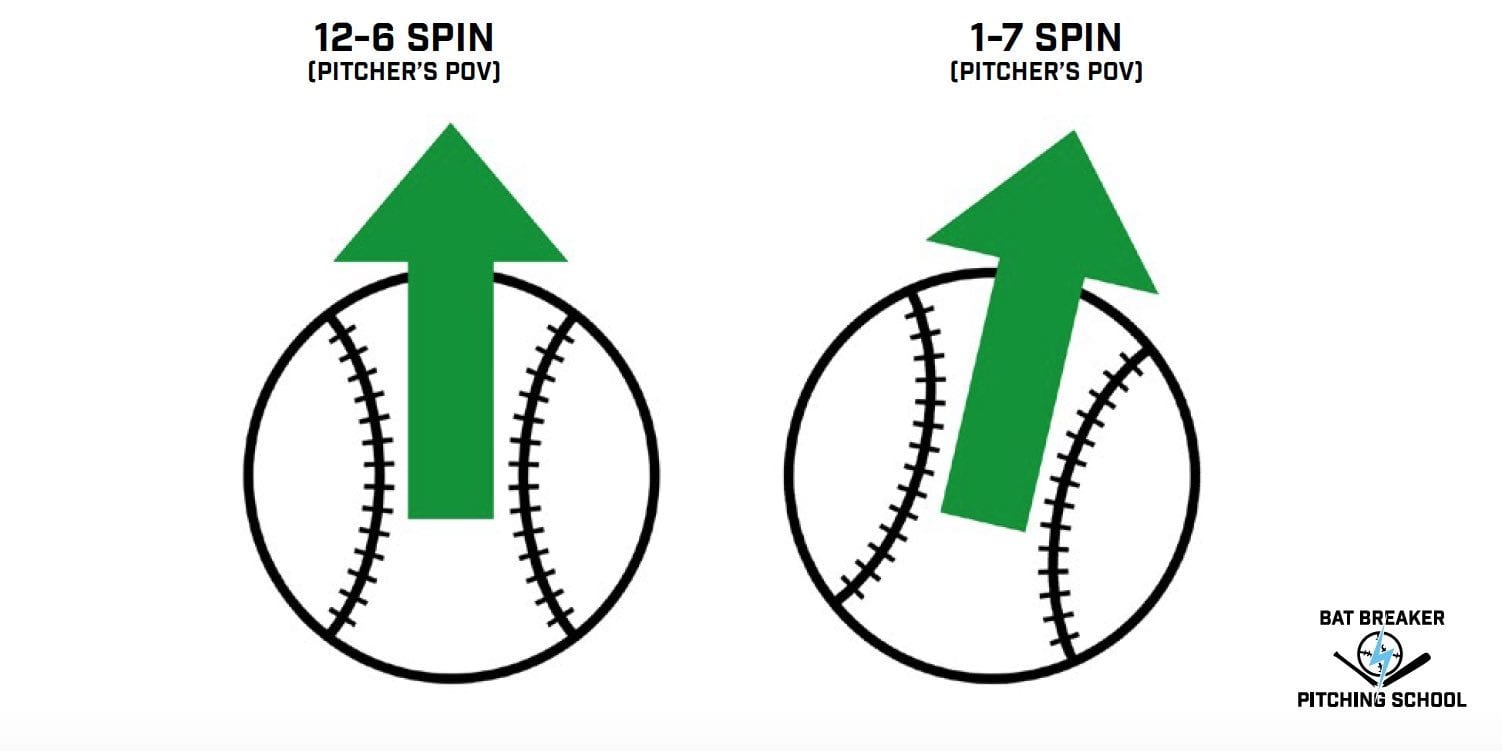
Here’s what you need to know:
- The goal is to produce topspin (forward spin) either directly forward (as in a 12-to-6 curveball) or at a slight angle (1/7 break for righties, or 11/5 break for lefties). For reference, 1/7 refers to the pitch breaking from one o’clock down to 7 o’clock.
- Producing topspin creates a high pressure zone of air above the ball along with a low pressure zone below it. The high pressure pushes the ball down, causing break.
- Curveballs have a constant and gradual break, but when they are thrown very hard (at about 85% of the fastball’s speed) and with very fast spin (2600+ RPMs is fast), they appear to break very sharply.
- Any mixing of sidespin along with the top spin causes the break to be less sharp, as the mixture of spin produces less air pressure forcing the ball to break downward.
For more on spin, strategy, drills, pitch calling and more, grab a copy of my pitching book below.
A Good Curveball Grip Allows Each Unique Pitcher to Impart His Best Spin.
No one grip is better than another! Rather, a pitcher should try different grips out and find the one that feels the most comfortable and produces the best result. But – how will a pitcher know which pitch produces the best curveball? Answer: The throwing partner.
A good throwing partner – who knows what to look for and will give honest feedback – is critical to the pitch-development process.
What a Good Throwing Partner Does For a Pitcher
- That one was really sharp!
- That one wasn’t as good.
- That one was kind of slurvy.
- That one was too loopy.
- The spin on that last one was too sloppy – too much sidespin
- You got around that last one, and it had too much lateral break
Each throwing partner’s method of feedback will vary, but it’s critical that he gives constructive criticism and explains what he sees in each pitch. Pitchers will not be able to tell for themselves which curveballs are the sharpest versions. Even with veteran pro pitchers, it becomes very difficult to tell two very similar pitches apart. The help of the throwing partner and/or catcher is needed.
Different Curveball Grips
Remember! Getting the right curveball grip is important, but it’s just one piece of the puzzle. The grip will not make you Adam Wainwright or Clayton Kershaw – the grip is merely like opening the car door. Opening the door and sitting down in a car won’t make you a race car driver…but it’s necessary if you want a chance to be one.
Standard Curveball Grip
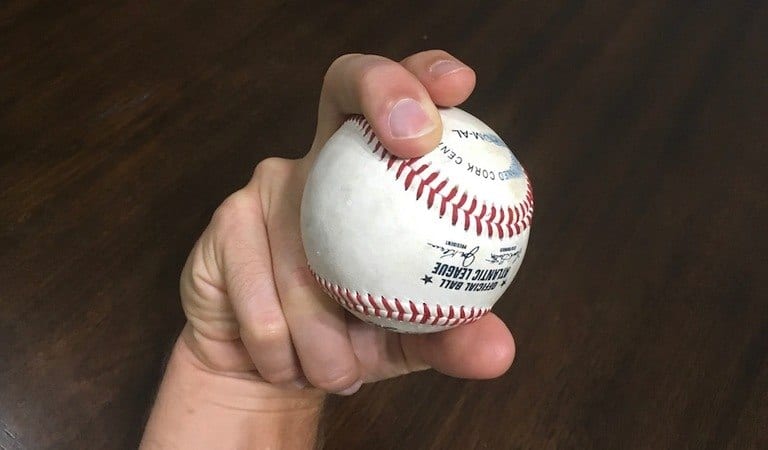
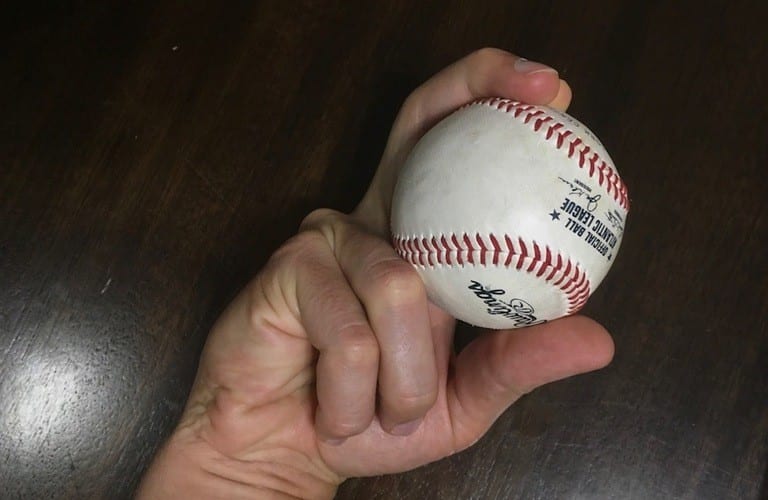
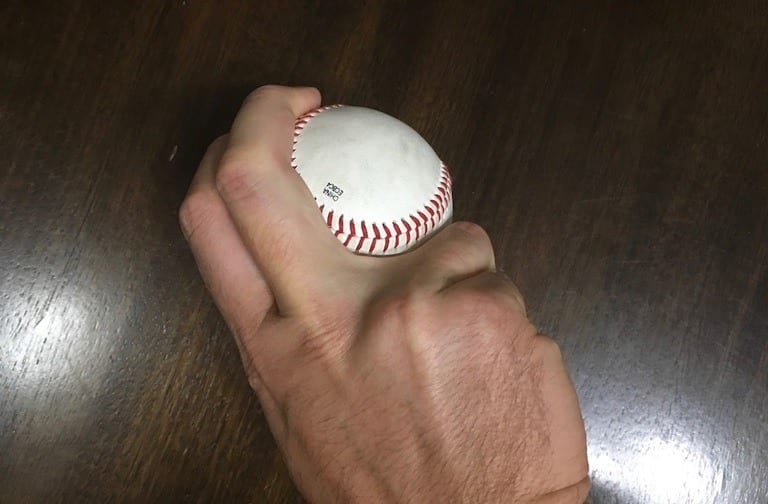
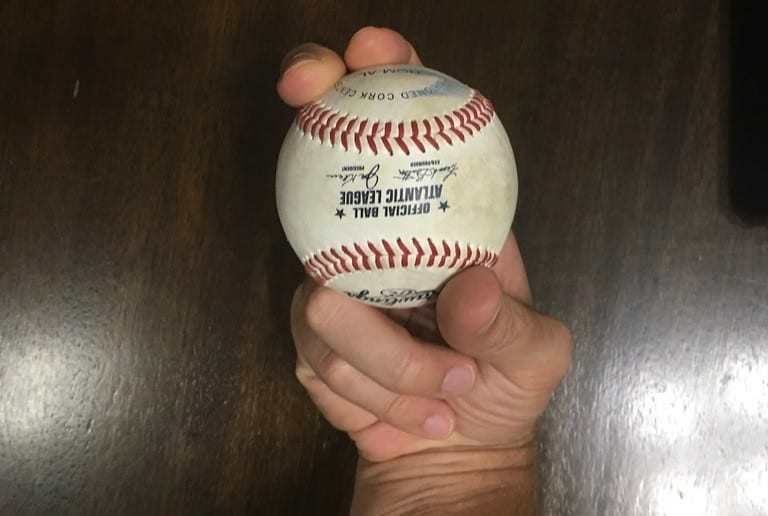
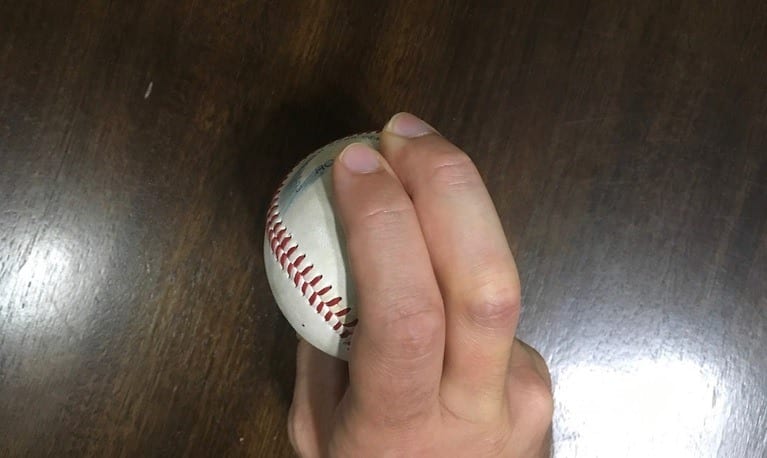
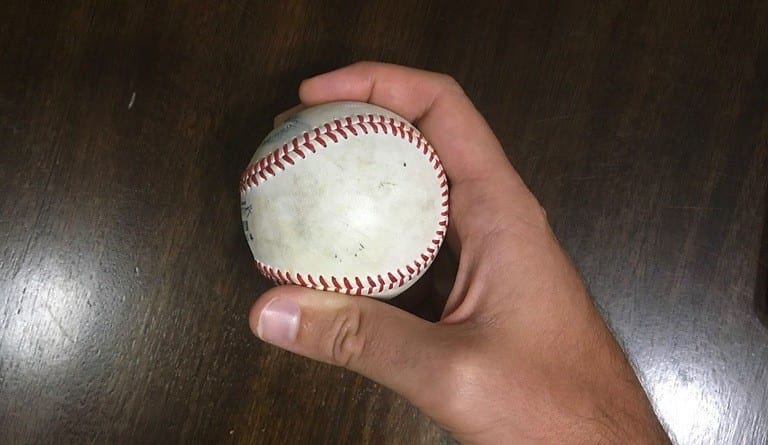
The Best Locations to throw a curveball
Once a pitcher has learned the proper curveball grip and technique for throwing it, then it’s time to work on commanding it. In the video below, you’ll find the best locations to throw a curveball depending on the count.
Okay, So What Are The Other Grips?
There are a handful of variation grips, including the standard one shown above (which is what I threw, and I had a very, very good curveball).
If you want to learn everything about the curveball, check out my definitive guide on throwing it.
Remember that the core of the grip – the middle finger & thumb placement, along with the way the ring and pinky finger fold underneath – these elements are pretty much universal across all the grips you might find.
The main difference is index finger placement:
- Standard (shown above): Index finger rests lightly on the ball without applying pressure
- Crossover: Index finger crosses over and rest atop the middle finger
- Pointer: Index finger points straight up, so that it is not resting on top of the ball.
- Fingernail: Fingernail of the index finger digs into the ball slightly, which does not adversely affect spin.
- Knuckle Curve: Commonly thought of as a different pitch, the knuckle-curve is merely a different placement of the index finger, in which the second-digit knuckle of the index finger rests on the ball.
See photos below of each variation.
Crossover Grip


Pointer Grip
Though I don’t recommend pointing your finger up (it can be spotted by hitters) this is one of the more popular curveball grips because Adam Wainright throws it this way.

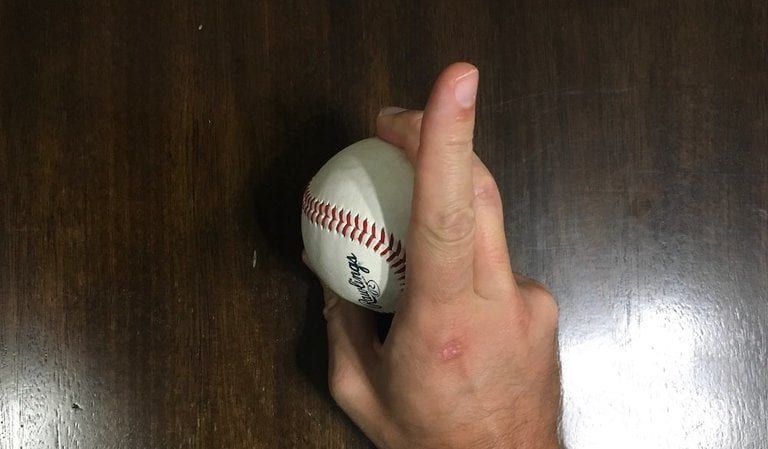
Fingernail Grip
This is one of the more strange curveball grips, and keep in mind that the finger does not push forward (though some may claim this). It’s really just a placeholder.


Knuckle Curve Grip
Okay, let’s stop here a moment and talk about the knuckle curve grip, and the pitch as a whole. Is it different? Is a knucklecurve a separate pitch, as it seems to be?
The answer is no – the knuckle curve will be thrown with the same spin as any other curveball; the only difference is the finger placement, as shown below. For more on this, and to see a demonstration, watch the video below.
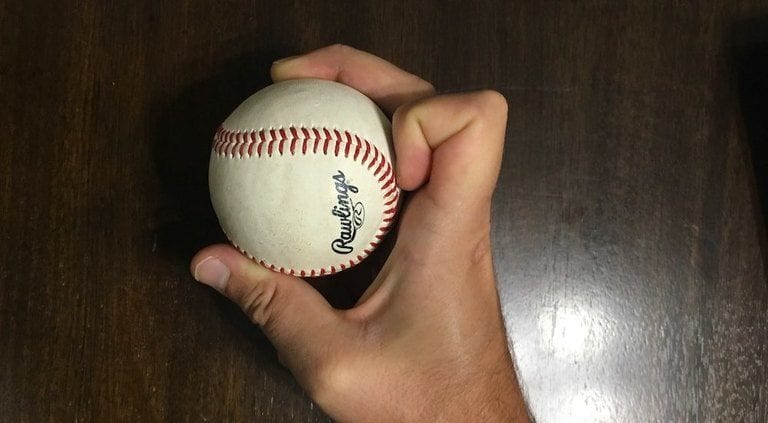
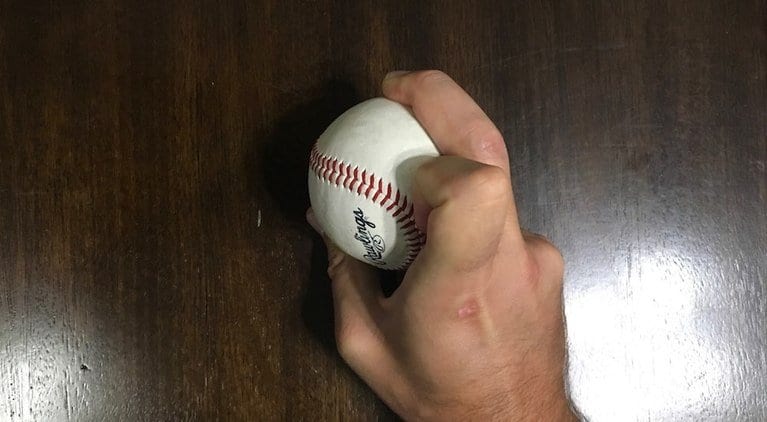
Which Curveball Grip is Right for You?
The grip is the easy part – tinker with different variations and find the one that suits you best – it should both feel comfortable (though they may not at first) and produce good shape and spin. But, remember that the process of learning the curveball and understanding it is much, much more important than the grip.
Learn Good vs Bad Pitching Drills You Can Use Today
Pitch grips and pitching mechanics are both incredibly important for the development of a pitcher. Learn the difference between good and bad pitching drills in the video below.
To learn more about how you should be training as a pitcher, download my pitcher’s checklist. It’s got much more knowledge and can help get you to the next level, well beyond the grip.
More Pitch Grip Resources
- How to Throw a Curveball – The Complete Guide
- Two Common Curveball Mistakes
- How to Throw a Slider
- How to Throw a Changeup
- How to Throw a Sinker
Thanks for reading and be sure to grab a copy of my book if you’re a coach or pitcher!

Curveball Grips FAQ
Read below for answers to common questions…
What curveball grip is best?
There is no best curveball grip – rather, there are a bunch of grips with different index finger placements that are all mostly based on comfort. Pick the grip that works best for you and that produces the best spin and shape. Just because an MLB pitcher uses one grip doesnt mean it will be the right grip for you.
How do you throw a curveball?
Great curveballs have three main factors: speed, spin rate and spin axis.
1. The harder a curveball is thrown, the better, as it makes the break appear more sudden and forces a hitter to decide to swing (or not) sooner.
2. The faster the ball spins (spin rate), the more sharply it will appear to break. There is a strong correlation in the MLB between spin rate on curveballs and swing-and-miss rate.
3. Spin axis – this is the big key, and the big difference between amateur and pro curveballs. The ball needs to spin with a “clean” spin axis, meaning it has only spin in one direction: forward either at a 12-6 orientation or 1-7 (opposite for lefties). The more side spin mixed in, the more softly the curveball will break.
How do you improve your curveball?
A huge factor in improving your curveball is practice and quality feedback. Find a catcher partner who knows what spin they’re looking for when they catch your curveball. If they can tell you which ones had proper spin vs bad spin, and good break vs poor break, then you’ll get the feedback you need to make adjustments that continue to help your curveball improve.
